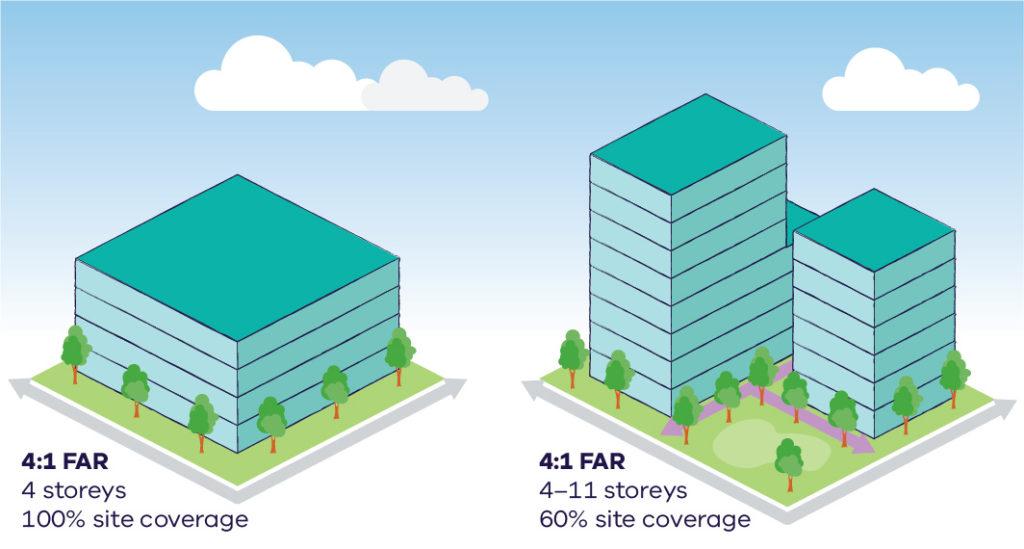In the Philippines, the Floor Area Ratio (FAR) is a measure used in urban planning and zoning regulations to determine the maximum allowable floor area of a building relative to the size of the lot on which it is built. While the concept of FAR applies to both residential and commercial properties, there are differences in how it is regulated and applied:
Residential Floor Area Ratio (FAR)
-
Purpose and Design: Residential FAR is primarily designed to control the density of housing in a given area. It aims to ensure that residential areas do not become overly congested and that there is sufficient space for amenities such as parks, playgrounds, and community facilities.
-
Regulations: The specific FAR for residential areas can vary depending on the zoning classification (e.g., low-density residential, medium-density residential, high-density residential). Local government units (LGUs) set these regulations based on their comprehensive land use plans.
-
Typical Values: Residential FAR values tend to be lower compared to commercial areas to maintain a balance between built-up areas and open spaces. For example, a low-density residential zone might have an FAR of 1.0, meaning the total floor area of the building can be equal to the lot area.
Commercial Floor Area Ratio (FAR)
-
Purpose and Design: Commercial FAR is aimed at maximizing the utility of land for business and commercial activities. It focuses on accommodating higher densities to support economic activities, such as offices, retail spaces, and services.
-
Regulations: Commercial FAR values are typically higher than residential FAR to allow for more intensive development. This helps in creating vibrant commercial districts with a mix of uses, including retail, office, and sometimes residential components.
-
Typical Values: The FAR for commercial areas can vary widely, but it is generally higher than that of residential zones. For example, a commercial zone in a central business district (CBD) might have an FAR of 5.0 or higher, allowing for much taller and larger buildings compared to residential zones.
Key Differences
- Density: Commercial FAR allows for higher density compared to residential FAR.
- Usage: Residential FAR is geared towards living spaces, while commercial FAR focuses on business and commercial uses.
- Zoning: FAR values differ based on the zoning classification and the specific requirements of the local government unit.
- Regulatory Goals: Residential FAR aims to maintain livability and community amenities, whereas commercial FAR aims to support economic activities and maximize land use efficiency in business districts.
In summary, while both residential and commercial FAR serve to regulate building density, they differ significantly in their application, values, and regulatory goals based on the intended use of the land.



